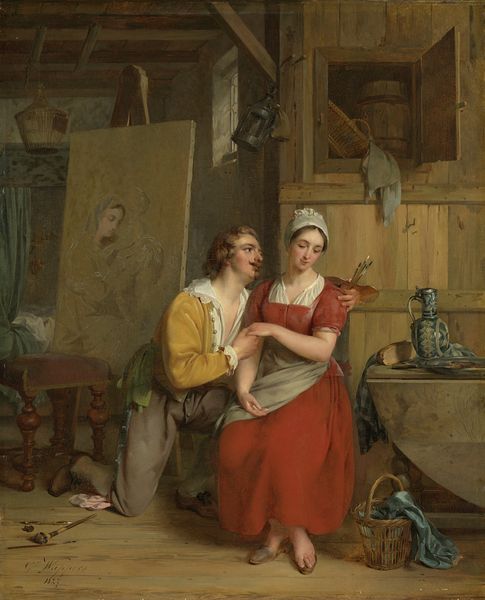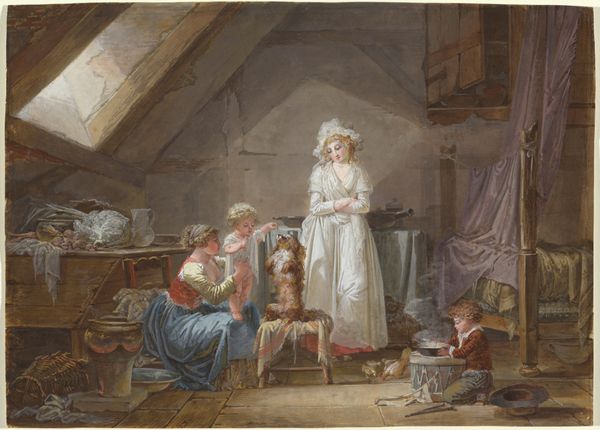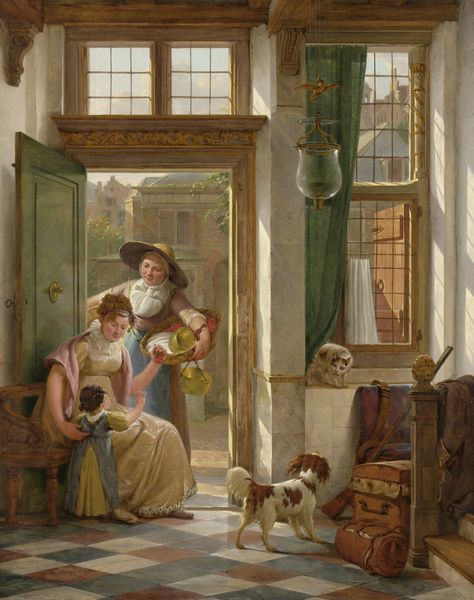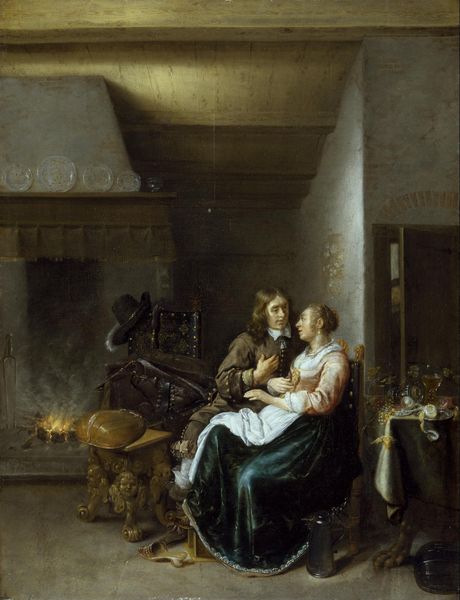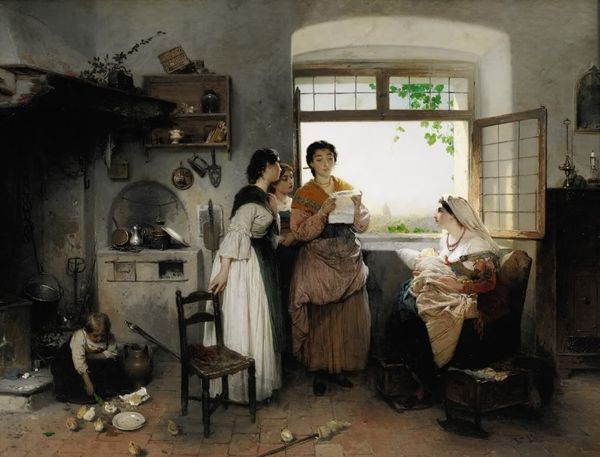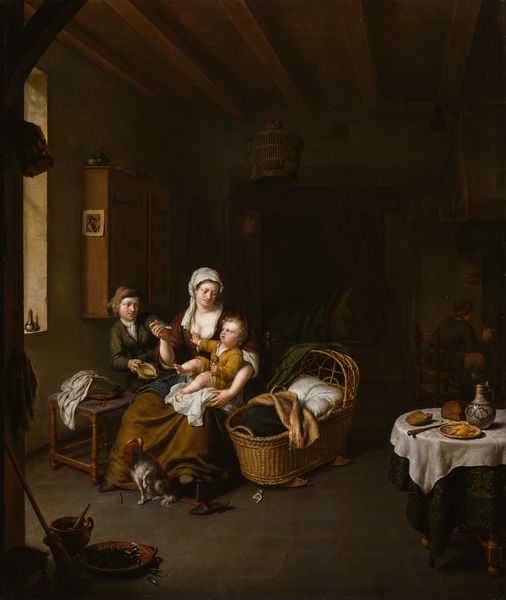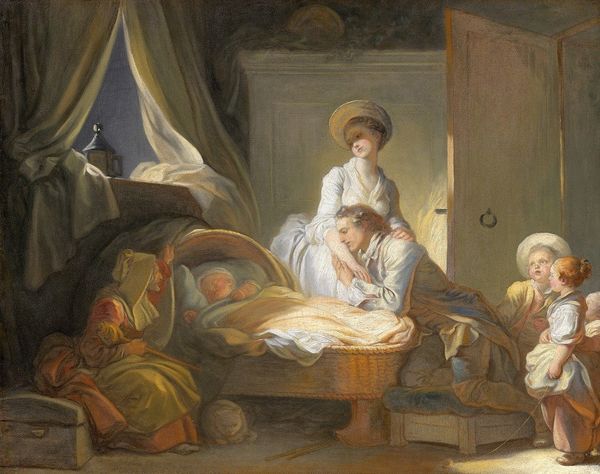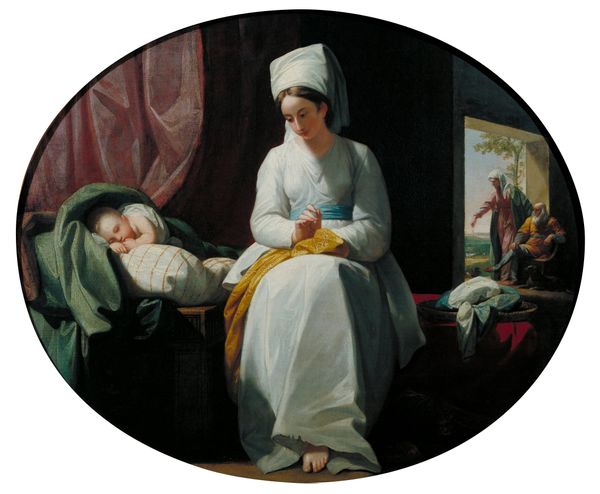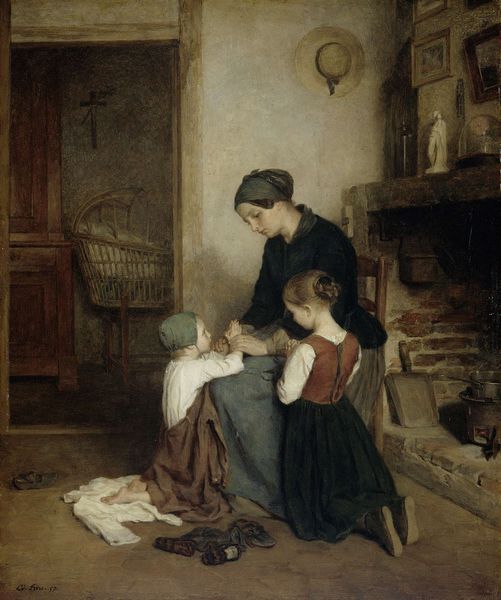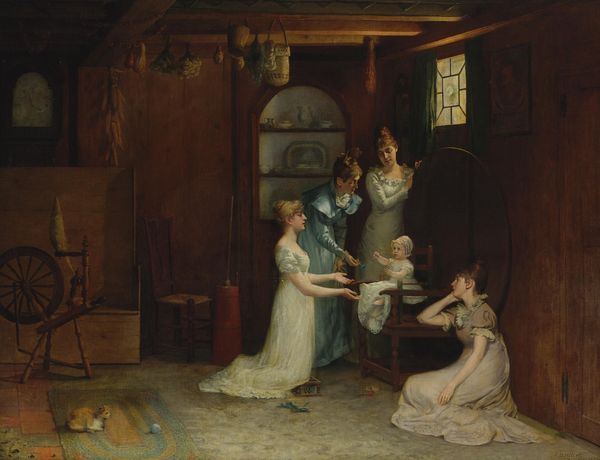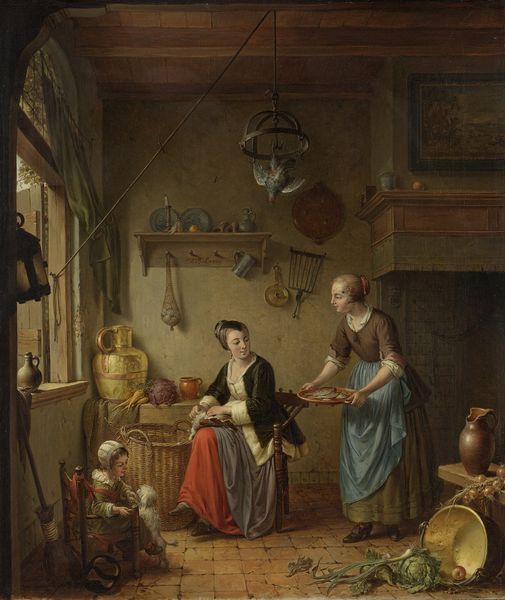
painting, oil-paint, canvas
#
painting
#
oil-paint
#
landscape
#
canvas
#
romanticism
#
genre-painting
#
history-painting
#
academic-art
#
italian-renaissance
#
realism
Dimensions: 72.5 cm (height) x 82.5 cm (width) (Netto)
Curator: Here we have Albert Küchler's "A Young Italian Woman Being Adorned by Her Mother," painted in 1835. It's currently housed at the SMK, the National Gallery of Denmark. Editor: It has an air of quiet domesticity about it. I’m immediately drawn to the textures – the smoothness of the young woman’s dress contrasted with the roughness of the wall. What can you tell me about the material choices? Curator: Küchler, working with oil on canvas, uses light and shadow to create distinct spaces that serve more than one purpose. Notice how the interior functions as a place for traditional feminine work like hair adornment, while the exterior—a public area around the church—operates as a domain typically reserved for men, highlighting patriarchal expectations of the time. Editor: So the juxtaposition emphasizes the division of labor and gender roles. And the act of adorning—presumably preparing the daughter for presentation—implies a degree of social constraint. The painting suggests these women's lives are defined by these very concrete material and social conditions. Curator: Precisely. Moreover, we can also interpret this work through the lens of identity formation. The adornment signifies more than mere aesthetics; it suggests the imposition of societal norms on the young woman, negotiating between personal desire and cultural expectation within the context of the Risorgimento period. Editor: I am especially captivated by the background. The outdoor figures, though small, have a clear visual purpose; one assumes the viewer can deduce, from their clothing and other characteristics, some insight to this young Italian woman’s circumstances, particularly as seen from inside her home space, giving even common materials meaning. Curator: Exactly, Küchler gives importance to each part of the artwork! Consider how, through this depiction, we encounter ideas about class, cultural rituals, the public and the private... Editor: These material objects—the dress, the hairpiece, even the simple arrangement of space—they become loaded signifiers of identity, class, and the subtle yet powerful forces shaping women’s lives. It's fascinating how a single painting can reveal so much about the making and maintaining of social norms through material practices. Curator: Agreed. The ability to foster discussion about art, cultural traditions and the many factors influencing human interactions across temporal frameworks and cultures make paintings so amazing! Editor: And the way that examination allows us to then interpret not only how we came to be, but why we surround ourselves with our modern belongings!
Comments
No comments
Be the first to comment and join the conversation on the ultimate creative platform.
